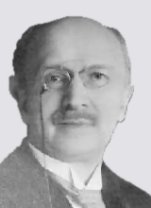|
|

|
|
Albert Moll (1862-1939)
vehemently opposed psychoanalysis and its founder Sigmund Freud. Nevertheless, he also subscribed to the concept of childhood sexuality and, in 1909, published an influential book titled “The Sexual Life of the Child”.
|
|
|
Ultrasound pictures have shown male fetuses with erections of the penis, and one has found vaginal lubrication in newborn girls. These phenomena can be called “sexual responses” in the sense used by Masters and Johnson, but this usage my not be very meaningful when applied to infants. After all, the typical physical and psychological reactions we now associate with “sexual” excitement do not begin to appear until later. For infants and small children, the many experiences of pleasure and wellbeing are still rather diffuse. Indeed, it may not even be wise to speak summarily of “the sexual life of the child” as many sexologists have done. Childhood sexuality may be more of a modern invention than a discovery. It is probably better understood as a cultural construct, a new interpretation of old biological facts. Former ages saw things very differently. We know, for example, that in many preliterate societies, and indeed in the European Middle Ages, parents, grandparents and wet nurses regularly masturbated small children in order to pacify and relax them. Should we consider this practice “sexual child abuse”? Our distant forbears would not have understood such an interpretation. Indeed, even when children masturbated themselves, their families saw it as a “natural” relief from discomfort like scratching or blowing one’s nose. The children may very well have had pleasurable sensations and even reached orgasm, but this was not seen as a “sexual” experience. It became “sexual” only with the dawning of the modern age, when childhood itself began to be recognized as a special, protected phase of human development. This brings us to another pertinent observation: An adult with an erotic interest in children typically misconstrues their need for affection as “sexual” desire. The children, however, may be surprised and even shocked when the erotic intentions of the adult suddenly become clear. His assumptions about the encounter then turn out to have been totally mistaken. In sum, the concept of childhood sexuality is problematical for a variety of reasons. Used indiscriminately, it can lead to misconceptions and therefore should not be accepted blindly. In reference to infants and children, the world “sexual” should always be used with caution.
|